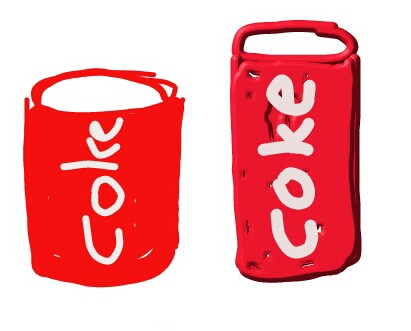Epsilon-Delta wrote a fantastic post on Noticing and Wondering, taking any article, commenting on what they noticed and the further questions they wanted to ask about it.
Inspired by Dan Meyer's Maths Curriculum Makeover, I aim to get students to think about what it is they need to know, rather than simply plucking the available (and often only available) information out of the textbook question.
Caloric Quandry
With this in mind, and Geoff's post on Caloric Quandry, the following problem could be posed.
Which coke can is higher in calories?
I expect some of the following 'notices' to appear:
Notices
- one coke can is taller than the other
- one coke can is fatter than the other
- coke cans have a cylinder shape
.... etc.
Students would then move onto the questions they wanted to ask...
Constructions
In an observed lesson on the construction of triangles, the following question was posed:
What do you need to know in order to produce an exact copy of this triangle?
I liked that the students then had to consider the angles and lengths of sides of the triangle rather than simply beginning with "this is how you construct an SAS triangle..."
Perhaps beginning with a less leading questions such as:
"Copy this triangle onto the paper in front of you"
Would encourage pupils to ask themselves the question "what do I need to know" rather than it being presented to them.
Once a large collection of different pieces of information had been gathered, the more focussed question of
"What is the smallest number of pieces of information you need to be sure you had it correct?"
Then later on...
"Are there 3 pieces of information that you could be given and still not be able to construct the triangle?"
Update 20/05/2013
Mr. Taylor used the Notice / Wonder technique fantastically with a Year 7 class last week - he puts its success down to the careful structuring and explanation of the technique, and reminding students when they didn't use "I notice" or "I wonder" at the start of their statements.

